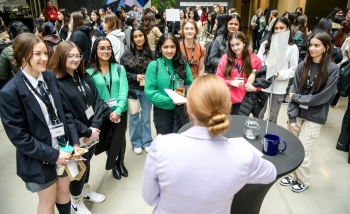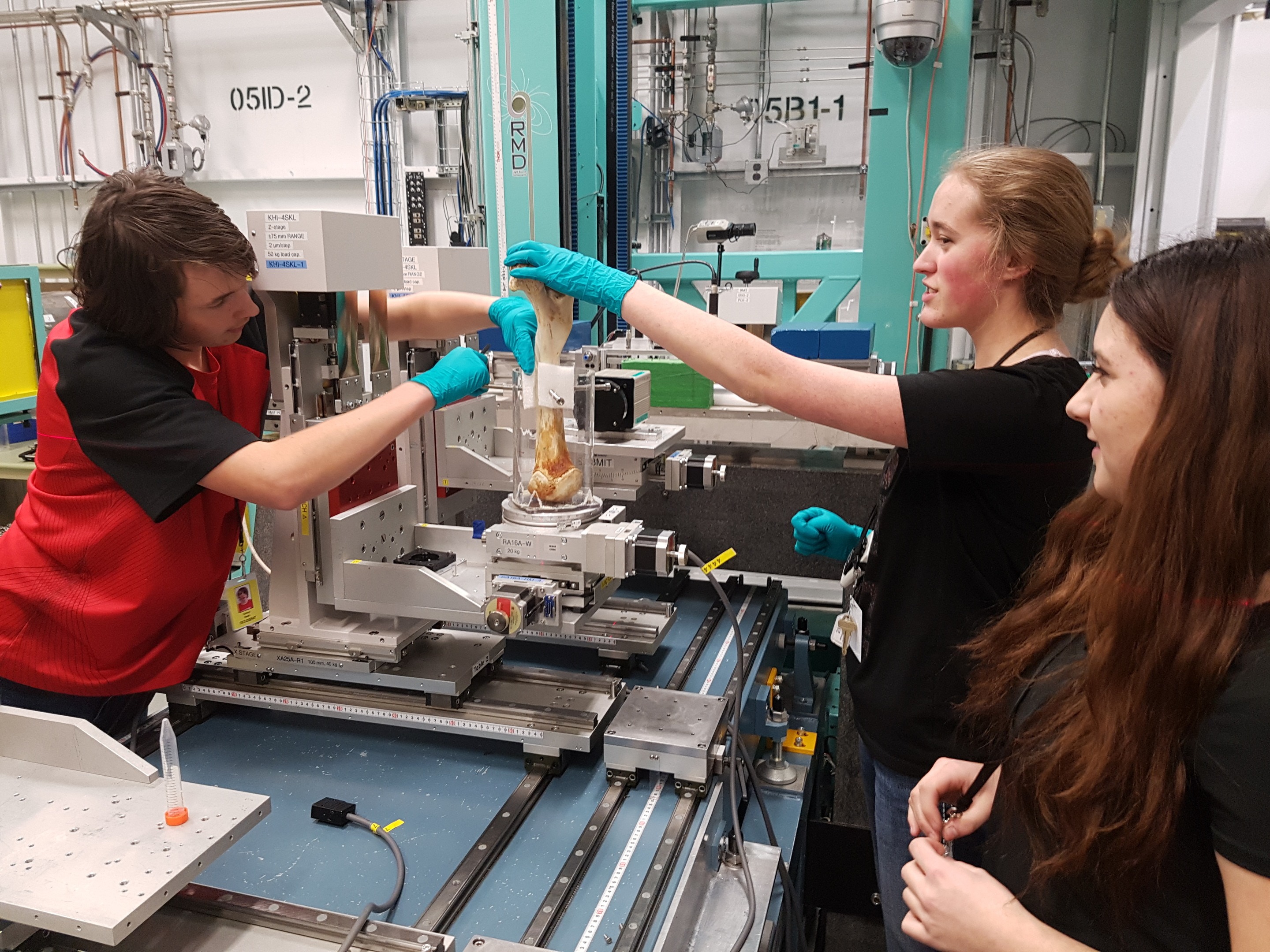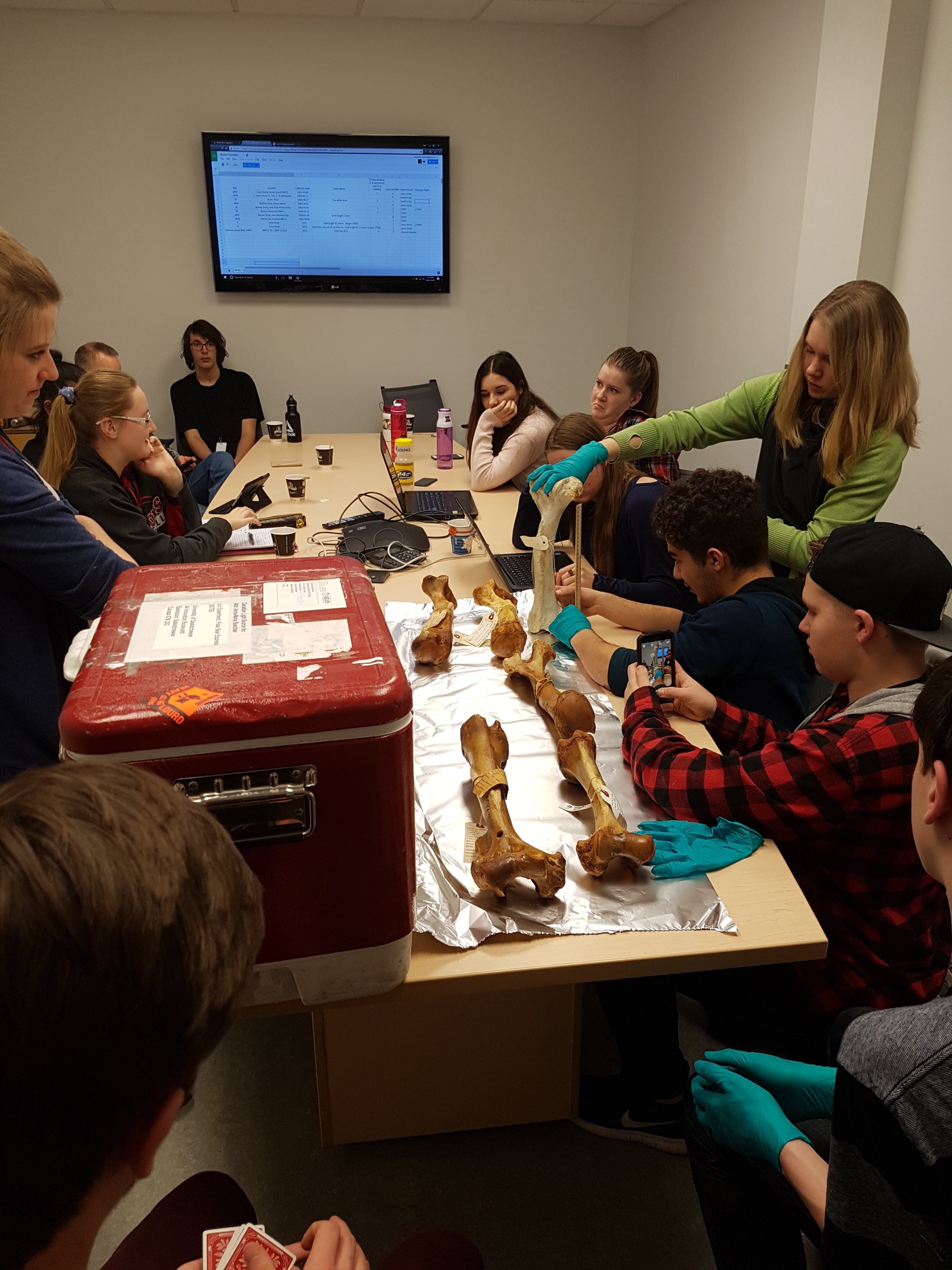Ryan Beck teaches physics, chemistry, and more at the high school in the small town of Sundre, Alberta. In fact, Sundre High principal Scott Saunders says, “In our high school of 300 students, Ryan Beck is the chemistry and physics department.” Beck loves his work, but the 2020 school year got off to a rough start – and not just because of the pandemic.
“I was feeling so tired, that first week back,” he remembers. “By Friday I couldn’t make it through the day.” He took himself to the walk-in clinic. Blood tests results raised red flags, an emergency room visit followed, and by the end of the day Beck found himself diagnosed with Stage 4 esophageal cancer. It had already spread past the point where his life could be saved.
That same day, the Canadian Association of Physicists called. Beck had been named as one of the CAP’s teachers of the year.
“It was a really weird day,” he says.
He’s been away from his beloved classes -- Grade 11 chemistry and Grade 12 physics --since his diagnosis. He’s not sure which he misses most. “I actually have a hard time picking between chemistry and physics,” he says. “I really enjoy chemistry for the flash, bang, wow part. But I really enjoy physics for the thinking and the depth of it.”
In case you’re wondering, yes, “flash, bang, wow” implies explosions: Beck is also a certified pyrotechnician and volunteer firefighter. He has set himself on fire only once. “You may have heard of the whoosh bottle?” he asks. “You take a five-gallon bottle, add a little bit of alcohol to it, and light it. I added too much and I created a fireball that my arm was inside and melted all the skin off my forearm.” He went to the emergency room at lunchtime and was back for afternoon classes.
Beck blames the incident on the teaching he was doing at the time: “I was talking about the model of the atom,” he says. “The whoosh bottle was just a reward for the students, because they’d been so engaged with me in this lesson. I was teaching while I was setting it up, and I forgot to measure.”
Beck was preoccupied because the model of the atom is a favourite lesson. He starts with the Greek atomists, who were the first to posit that the world was made of indivisible parts that are too small to see, and sweeps forward to the alchemists, who were among the first to make practical use of the atomist ideas. He discusses the distinction between philosophy and science, between alchemy and physics. “The real question is ‘What makes science, science?’” he says. “How does it work?”
Beck notes that John Dalton developed modern atomic theory in 1803, but a hundred years later, there were still physicists – including founding father of quantum mechanics Max Planck – who didn’t believe that atoms were real. That’s the way science often works: a compelling model frames the discussion but doesn’t end the debate. “There will be a couple hundred years of genuine arguments on both sides. That’s what it takes to settle a matter in science – for us to say ‘Okay, so this is a fact now.’”
If this sounds a long way from a physics class of memorizing Newton’s three laws of motion and figuring out which bits of data to plug into which equations, it is. Science, says Beck, is not a list of facts and equations at all. It’s a system of models.
Beck credits Perimeter Institute for shaping this approach to teaching. “The whole idea about models and model-based teaching came from the Perimeter Institute,” says Beck. In addition to researching things like black holes and quantum information, Perimeter makes free multimedia resources that help teachers bring modern physics into the classroom. “I’d say they’re the best resources in the world,” says Beck. “It’s the way the resources get the kids thinking. That’s what matters.”
Also, he notes, “If there’s physics that we can teach with black holes or without black holes, let’s teach it with black holes. Black holes are cool.”
Beck also mentors the Beam Team: a small club of students who design experiments to run at the Canadian Light Source, a particle accelerator that produces a very bright beam of X-rays, occupying a football-field-sized building at the University of Saskatchewan.
“They pick their topic; they design the experiments; they conduct experiments. It’s 100 percent theirs,” says Beck.
To give an example of the projects they tackle, Beck talks about his last batch of Beam Team students, who wanted to help with the mission to Mars by studying the way astronauts lose bone mass in low gravity.
Without access to astronauts or a way to simulate low gravity, they had to approach it roundabout. One student suggested studying bears: they hibernate, so the students thought they might lose bone mass due to disuse. It turns out that they do not. The students thought that this might be their mystery. But it turns out that the hormones that protect bear bones are also well understood.
Finally, one student noticed that some bears do lose bone mass when exposed to certain chemicals – polychlorinated biphenyls, or PCBs – in the environment. That, too, had been investigated, but only in hard bones. Soft bones had yet to be studied, so at last the students had a project to attempt.
The Beam Team still had months of work before they could take their experiment to Saskatchewan. They had to figure out how to get polar bear bones, then figure out which bears had been exposed to what amount of PCBs. They had to write their proposal and have it accepted.
It was a lot of work. But the eventual result – polar bear bone CT scans so crisp and detailed that the Beam Team nearly required supercomputers to analyze them – was good enough to catch the attention of the leading polar bear researcher in the world.
“We could talk for a couple of hours about what the kids got from it,” says Beck. Some Beam Team members got scholarships or went on to undergraduate research projects. All of them got a taste of real science.
As CAP teacher of the year, Beck is being honoured for his work with these students, for his innovative approaches in the classroom, and for his mentorship of other teachers as director of Perimeter’s Teacher Network in Alberta.
After his cancer diagnosis, Beck had to step aside from Perimeter’s Teacher Network and the Beam Team – not to mention the junior Lions Club, the after-school drama troop, and the student mixed martial arts training program. He is receiving palliative chemotherapy, designed to improve and prolong his life. It leaves him sick one week, but feeling pretty good for the next two.
He has a plan for those upswings. When reached on November 2, he was about to head back into the classroom three days a week, working hand in hand with the substitute teacher who has been picking up his classes. He plans to stay in the classroom as long as he can.
“That’s who I am; that’s what I do,” Beck says. “So that’s where I want to be.”
About PI
Perimeter Institute is the world’s largest research hub devoted to theoretical physics. The independent Institute was founded in 1999 to foster breakthroughs in the fundamental understanding of our universe, from the smallest particles to the entire cosmos. Research at Perimeter is motivated by the understanding that fundamental science advances human knowledge and catalyzes innovation, and that today’s theoretical physics is tomorrow’s technology. Located in the Region of Waterloo, the not-for-profit Institute is a unique public-private endeavour, including the Governments of Ontario and Canada, that enables cutting-edge research, trains the next generation of scientific pioneers, and shares the power of physics through award-winning educational outreach and public engagement.
You might be interested in





